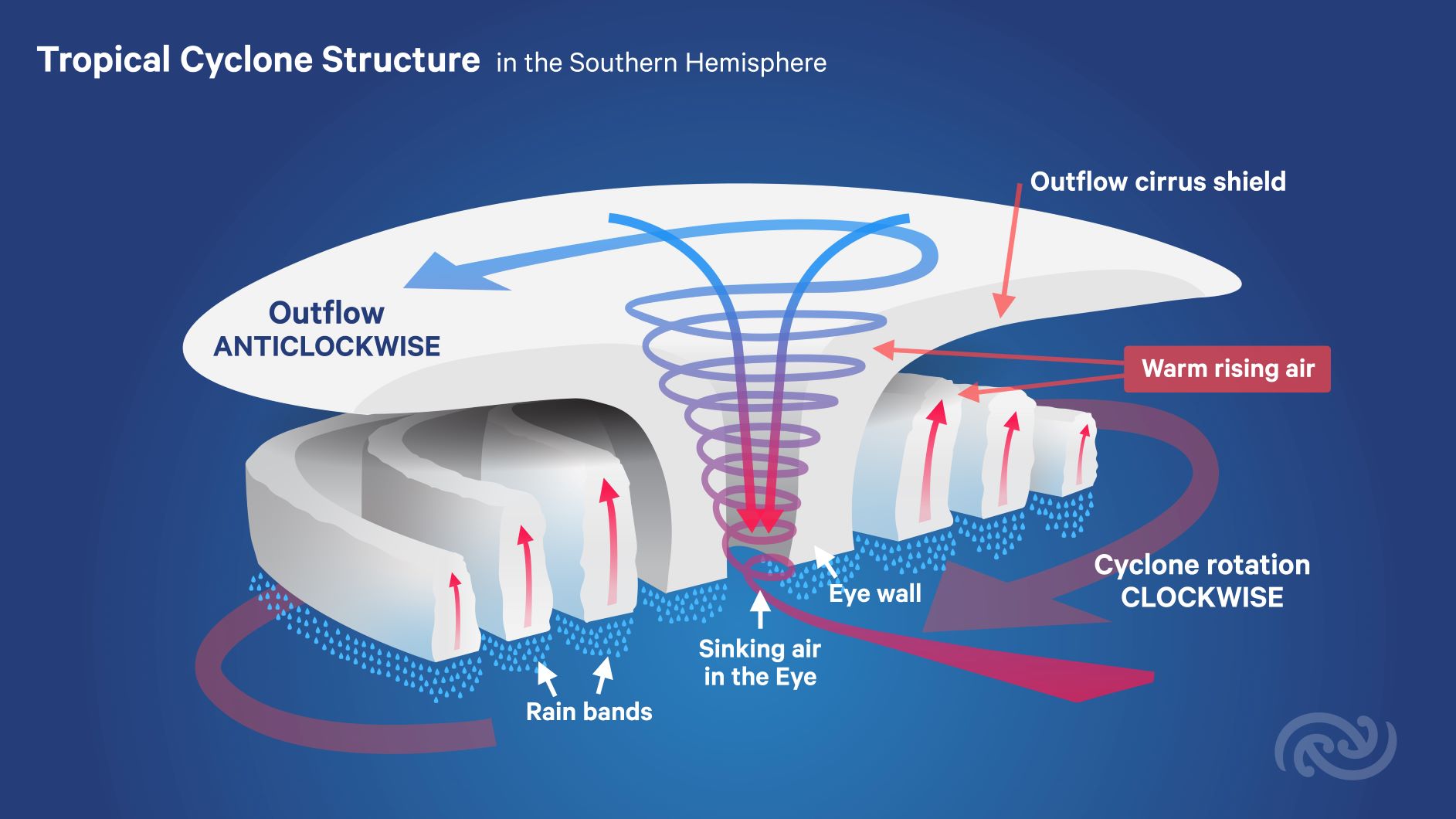
Researchers are confident that a climate change is driving an increase in tropical cyclone intensity, but a great deal of detail about this transformation is unknown, limiting society’s ability to adapt. As a result, a group of tropical cyclone researchers have performed a review of all that we do know about the subject in order to precisely identify holes in our understanding and propose how the field can move forward.
Their review appears as the lead paper in a special issue of the journal Advances in Atmospheric Sciences published in January and dedicated to the topic of climate change and tropical cyclones.
In a warming climate, meteorological theory, modelling, and historical observations suggest that tropical cyclones are likely to increase in intensity and deliver greater rainfall, even as there may be fewer of them overall. Such storms (called hurricanes in the Atlantic Ocean, typhoons in the western Pacific Ocean, and cyclones in the Indian Ocean) are also predicted to intensify faster and emerge at higher and higher latitudes (as the physical conditions for their creation spread poleward).
However, despite such confidence in the overall trend, there remains considerable uncertainty about this increase in intensity for such storms. Most studies on the effect of climate change on tropical cyclone intensity have been based on investigations of individual tropical cyclones, rather than on considering the phenomena across the whole of an ocean (or, as the researchers put it, basin-wide) or at a global scale.
The distinction is important as recent studies have suggested that the factors controlling cyclone intensity at the basin-wide scale can be different from those that affect individual tropical cyclones. This is because changes in the location where a cyclone first forms and then where it tracks across a region can result in changes in intensity even in the absence of any changes to the physical factors such as sea-surface temperature or increased water vapour content of the atmosphere that are directly associated with changes in intensity.
To fill this gap, a group of researchers have performed a review of the scientific literature on the effects of climate change on basin-wide tropical cyclone intensity. By considering the findings of multiple studies, such reviews provide statistically stronger evidence than that provided by any single study on its own, while also delivering a comprehensive summary of what is known about a given research topic.
“Straight out of the gate, we found across the literature agreement that the mechanisms responsible for tropical cyclone intensity remain poorly understood,” said Professor Liguang Wu of the Institute of Atmospheric Sciences at Fudan University and lead author of the review paper, “and that this intensity is controlled not simply by external environmental factors but also by internal dynamics—dynamics that are also not well understood and are currently computationally expensive to model.”
Also, while it is known that vertical wind shear (a change in wind speed or direction as altitude changes) can work to suppress cyclones, the dynamics of the interplay between this and the factors that prompt cyclone formation are understudied.
The reviewers concluded that while there is a consistency to indications of an increasing trend in tropical cyclone intensity, the literature demonstrates continued
uncertainty in the historical datasets of tropical cyclones, an incomplete understanding of mechanisms for the basin-wide intensity change, and much room for greater exploration of the intertwining of natural variabilities. They also warn that there is considerable model bias in the projected large-scale environment, and that poorly simulated inner-core structures of tropical cyclones is leading to relatively low confidence in the projected responses of tropical cyclone intensity to climate change.
To overcome these limitations, the reviewers recommend three courses of action. First, as quality datasets on past cyclone activity date back to not much earlier than the 1970s when satellite data began to be available for estimating tropical cyclone intensity, they suggest these datasets be extended much further back in time by using various types of geological proxies for cyclone activity. These proxies could include hurricane-induced deposits of sediments in coastal lakes and marshes, the ratios of different isotopes of oxygen captured in cyclone precipitation found in stalagmites in caves, and the growth of corals and tree rings. Beyond such geological and biological proxies, the reviewers argue, researchers might want to investigate the archives of local governments in China, who have been recording natural disasters dating back to the Ming Dynasty in the 15th Century.
Secondly, researchers should try to improve their understanding of the natural variability of tropical cyclone intensity. Again, because most trend analyses only focus on records since the 1970s—a relatively short period—they may be missing some aspect of natural variability that could exist on the scale of multiple decades or even longer.
Finally, looking across oceanic basins, the reviewers note that there are many regional atmospheric circulation phenomena that impact cyclones such as extended areas of low pressure that relate to monsoons in the western North Pacific or the so-called South Asia High, a thermal high pressure system whose own intensity is impacted by heat gradients over the Tibetan Plateau.
“These large-scale circulation patterns are also affected by climate change,” added Professor Wu, “and because of their consequent impact on cyclone intensity, it is essential that the linkage between the two phenomena be further investigated.”
Once these limitations are overcome, the reviewers believe the field would be better able to answer the questions the rest of society urgently needs answered about climate change and tropical cyclones—the costliest of all natural weather disasters.

